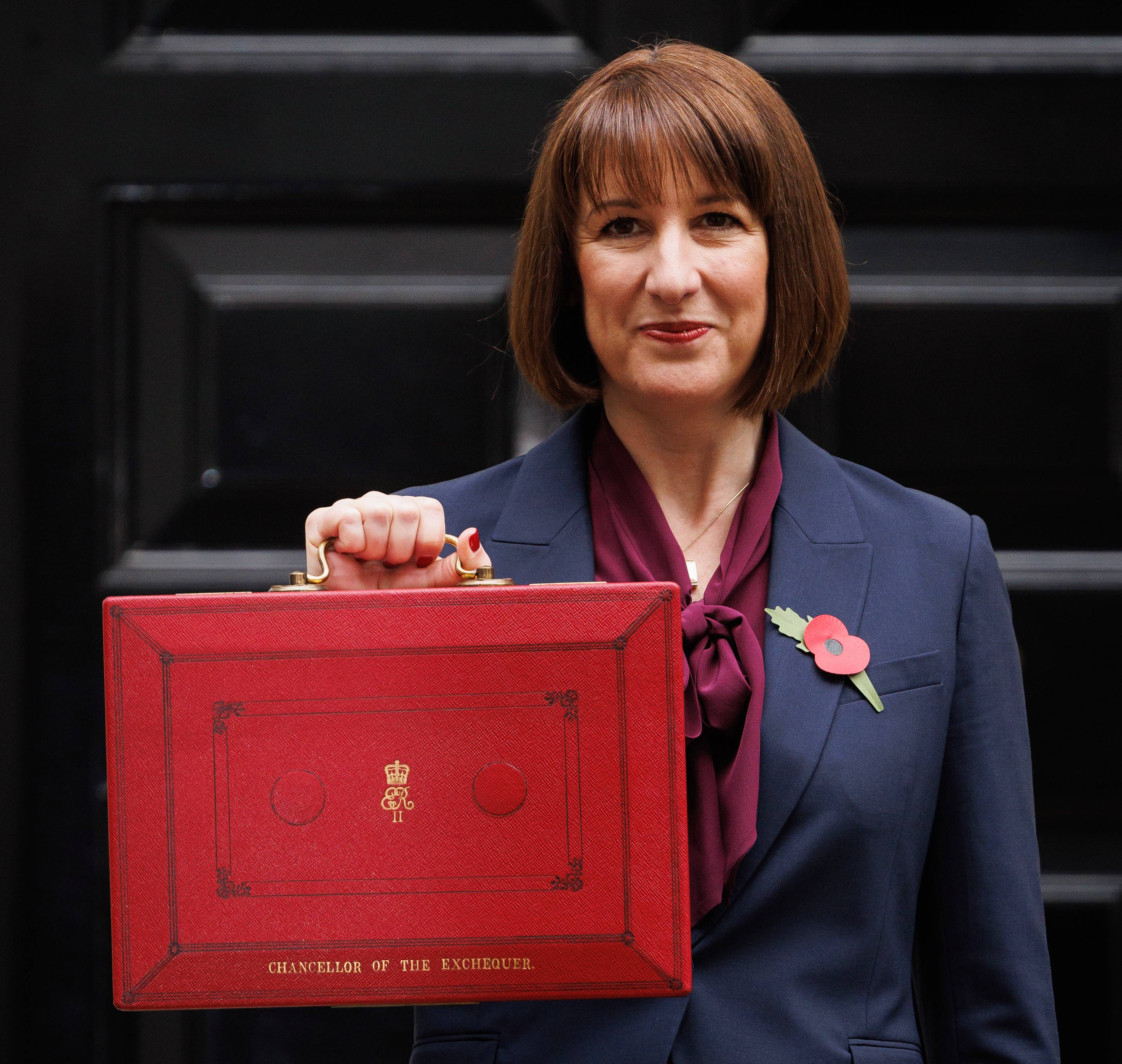Rachel Reeves announced several changes in her Autumn Budget. We've broken it all down so you know how it could impact your finances.
What does the Budget mean for your finances?
Autumn Budget 2025: key planning priorities for our clients

Article last updated 1 December 2025.
After months of speculation, the Autumn Budget once again proved a defining moment for financial planning in the UK.
Anticipated changes prompted reactions in advance to measures that weren’t announced on the day and never looked likely to be so. Some people accelerated asset disposals, restructured property portfolios and revisited pension strategies, sometimes at the expense of long-term objectives or sound financial principles.
However, the changes that were most feared didn’t materialise. The Chancellor also announced that her measures have created ‘fiscal headroom’ of £21bn. That may relieve some pressure on the government’s finances and ease speculation over future Budgets in the next few years.
We now aim to provide clarity on what was announced, its implications for our clients, and how to respond without compromising strategic goals.
As expected, the Chancellor delivered measures focused on fiscal tightening and wealth redistribution. Headline income tax rises were avoided for another year, but the Treasury’s £30bn fiscal gap had to be closed somehow. This was always going to be a big ask, without breaking the pledge not to increase income tax, value-added tax and national insurance (NI). Several changes set out in the Budget are set to significantly impact wealthier individuals, trustees, and families.
Income tax
Fiscal drag is the silent tax rise that keeps biting, year after year. With income tax thresholds now frozen up to 2031, many people will continue to find less in their pockets year-on-year, even if their headline tax rate hasn’t changed. The impact is sharpest for those moving into a higher tax bracket, and almost guaranteed if earnings creep above £100,000, where the personal allowance tapers away. For families with small children, where one parent earns above £100,000, the loss of 30 hours of free childcare adds another sting.
This is an annual reminder that inflation-linked pay rises don’t always feel like progress when fiscal drag quietly erodes your take-home pay. Saving less for the future is the most likely outcome, so revisit any plans already in place to adjust accordingly if necessary.
Property income tax
From April 2027, basic-rate taxpayers will pay 22% tax, higher-rate taxpayers will pay 42% tax, and additional-rate taxpayers will pay 47% tax on property income.
Inheritance tax (IHT)
The inheritance tax nil-rate band of £325,000 will remain frozen until 2031, pulling more estates into the tax net as asset values rise. The residency nil-rate band and familiar seven-year window for lifetime gifting also remain. However, whereas reliefs for business and agricultural property are still to be capped at £1mn from 2026, this will be a transferrable allowance between spouses, giving a total couple’s allowance of £2mn. Not forgetting, from April 2027, pension pots fall within the IHT framework, transforming what was once a tax-efficient shelter into a potential liability.
Changes in the Budget always underline the importance of reviewing strategies already in place. It’s also important to start sometimes-difficult family discussions to protect wealth for future generations.
Pensions
The spotlight has shifted from tax-free cash and the Chancellor’s proposed cap on salary sacrifice is set to shake up pension planning. Employees and employers were previously allowed to avoid NI payments on money taken out of pay and shifted into employee pensions.
Under the new rules, contributions above £2,000 would attract NI: 8% for earnings below £50,270 and 2% for above, while employers would also lose their NI exemption. According to government statistics, about 7.7mn workers use salary sacrifice schemes. The Office for Budget Responsibility (OBR) suggests this will raise £4.7bn in 2029-30 and £2.6bn in 2030-31. This new policy will hit high earners and diligent savers hardest, and could even prompt some employers to scrap schemes altogether.
For those earning above £100k, even with the cap, salary sacrifice contributions to pension pots are still one of the few remaining levers to offset punitive marginal tax rates and protect long-term wealth. Meanwhile, basic-rate savers should barely notice the change, making this feel less like fairness and more like a targeted squeeze on higher earners who already shoulder the lion’s share of tax.
Now is the time to review your arrangements and explore alternative tax-efficient strategies before the current window closes.
Cash ISAs
The overall ISA allowance will remain the same at £20,000. However, the Cash ISA allowance will be reduced to £12,000 for savers under 65 in 2027, to try to push more investment into stocks and shares. This move won’t impact the wealthy; it could just nudge them toward other tax-free shelters. The people who will be impacted the most are the everyday savers who rely on Cash ISAs as a safe haven, not for investment.
Young people saving for a first home and cautious investors without the appetite for stocks and shares will feel the squeeze the hardest. Instead of levelling the playing field, this move risks widening the savings gap, penalising prudence while the affluent simply pivot.
There was speculation about whether the Chancellor would reform the Lifetime ISA (LISA). Rather than remove it, the government are launching a consultation to find a replacement.
Savings tax
The tax rates on cash savings will increase by 2% across the tax bands, to 22%, 42% and 47%, affecting people who are either more risk averse or prefer to hold larger cash deposits as a buffer or emergency fund. It could be worth looking to other sources of tax-efficient saving for their cash, such as Premium Bonds, or other low-risk alternatives.
Dividend tax
Investors and business owners will be affected by the increase in dividend tax rates by 2% from April 2026. Basic-rate taxpayers will see their dividend tax rate jump from 8.75% to 10.75%, while higher-rate taxpayers will see their rates climb from 33.75% to 35.75%. The additional rate will remain at 39.35%. People affected the most will be those relying on dividends outside tax wrappers. Although the £500 allowance survives and ISAs and pensions remain safe havens, this move is expected to generate £2.1bn a year by 2030. Small business owners drawing income via dividends will be hard hit, along with investors holding shares outside ISAs or SIPPs, making tax-efficient planning more critical than ever.
Capital gains tax
Capital gains tax (CGT) has been in the government’s sights as a key revenue lever. There was strong speculation that CGT rates will be aligned more closely with income tax bands, however, it was left alone this time around.
Venture capital trusts (VCTs)
The tax relief for VCTs will fall from 30% to 20% from April 2026, making them a less attractive option to other tax advantaged investments, such as Enterprise Investment Schemes (EIS). VCTs have also been used as an alternative to pension contributions for higher earners, offering tax efficient income in retirement for some.
Mansion tax
The "Mansion Tax" is the first toe-dipping move towards a wealth tax. Houses worth over £2mn will become liable for an annual charge of £2,500, increasing to £7,500 for properties valued above £5mn. This affects just 1% of properties, yet the majority of these will sit within the South East.
Where the property market has been stagnant, stifled by pre-Budget speculation, we may start to see movement in properties close to or above these thresholds, to avoid these charges, which come into play in 2028. Coupled with increases in council tax, those looking to downsize whose main asset is their home, may accelerate these decisions.




